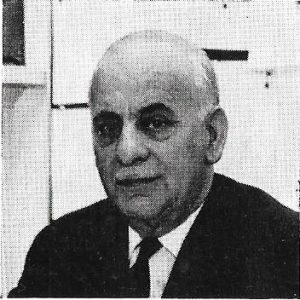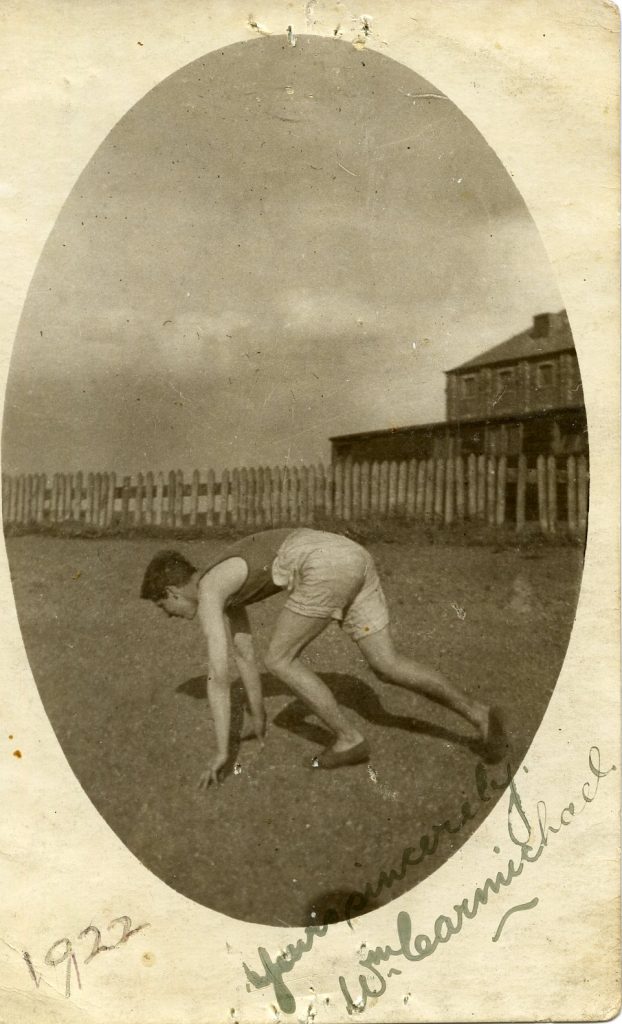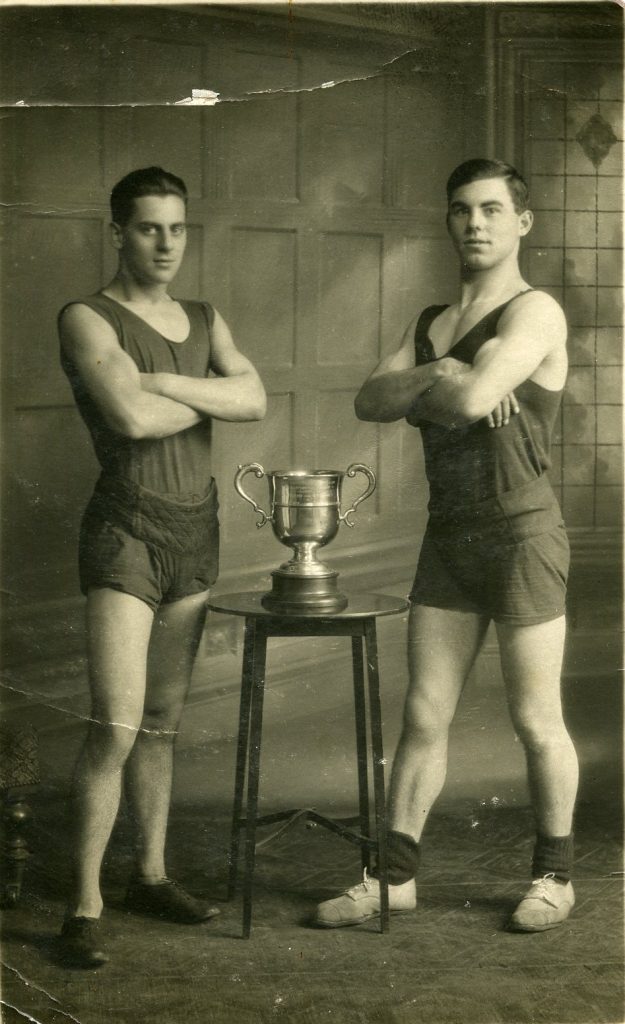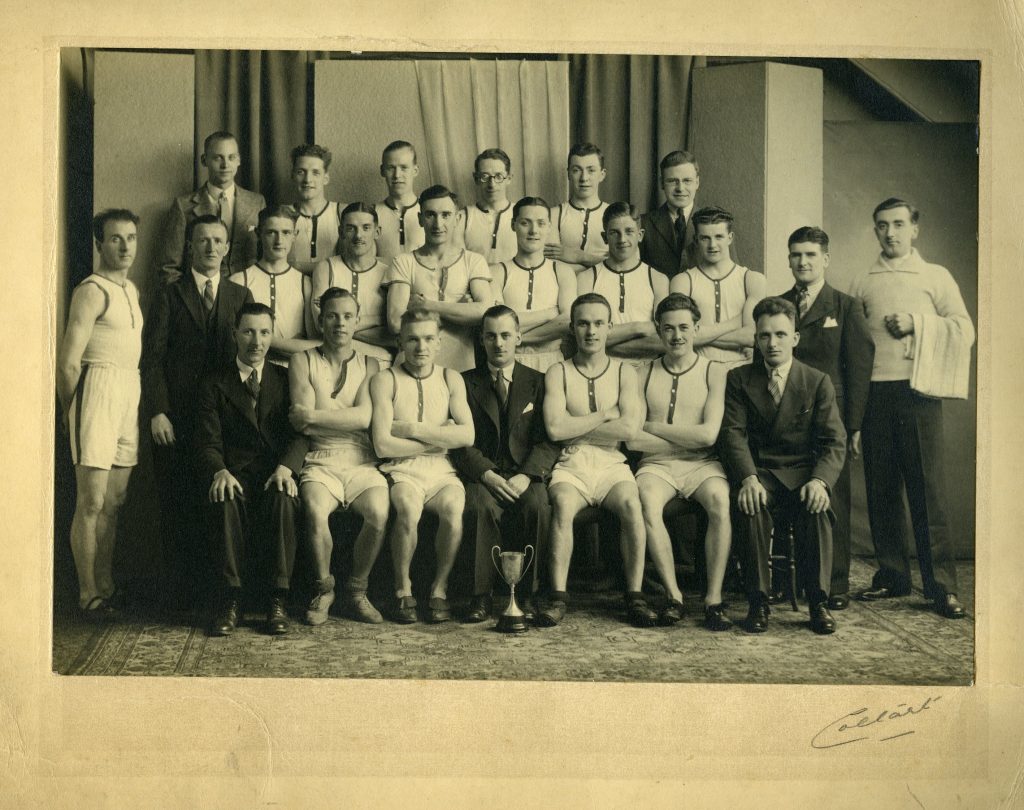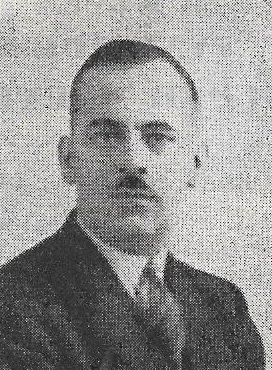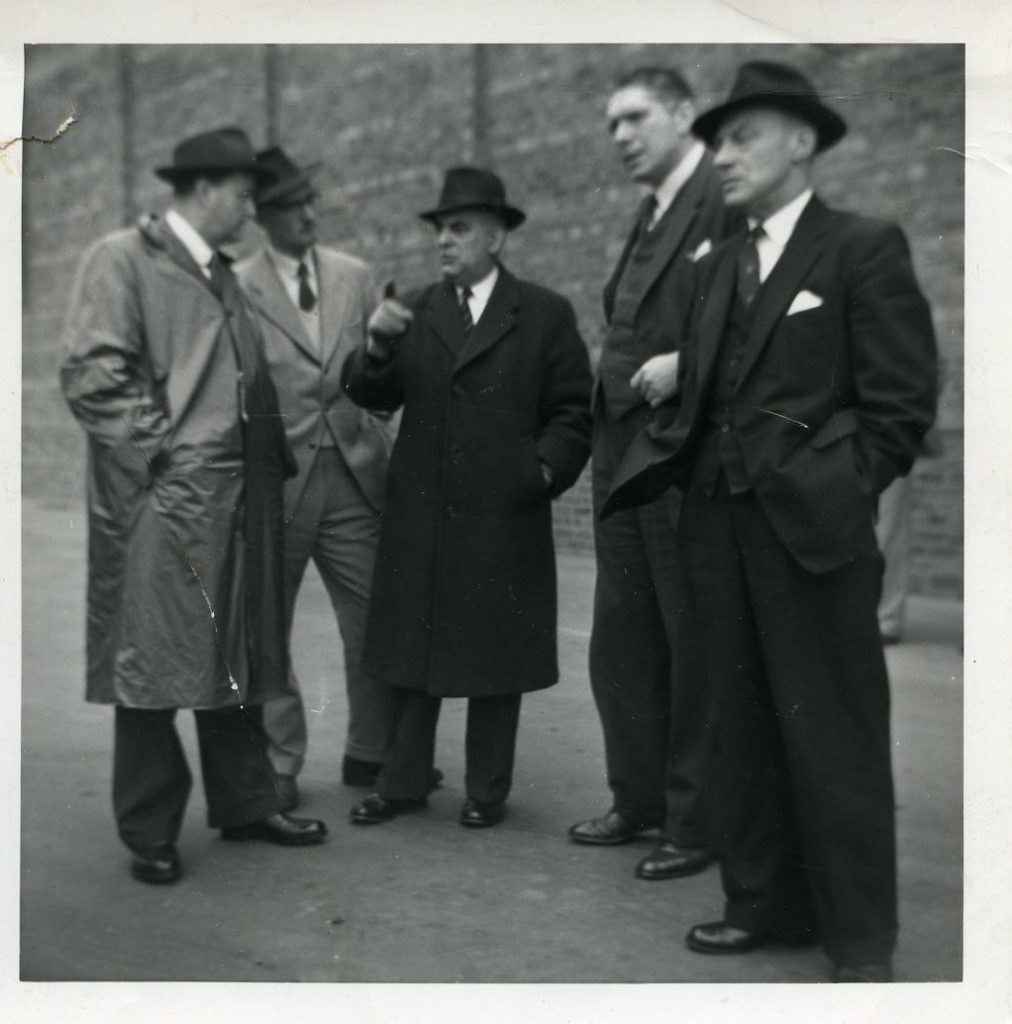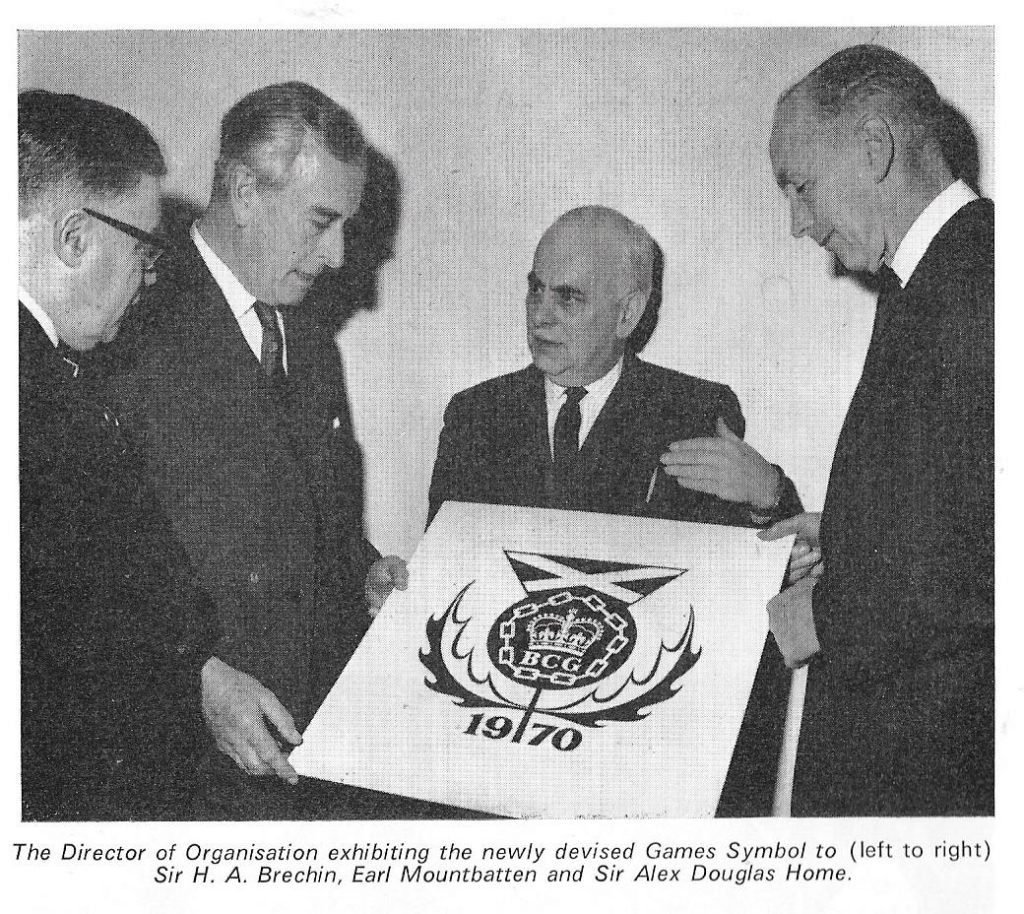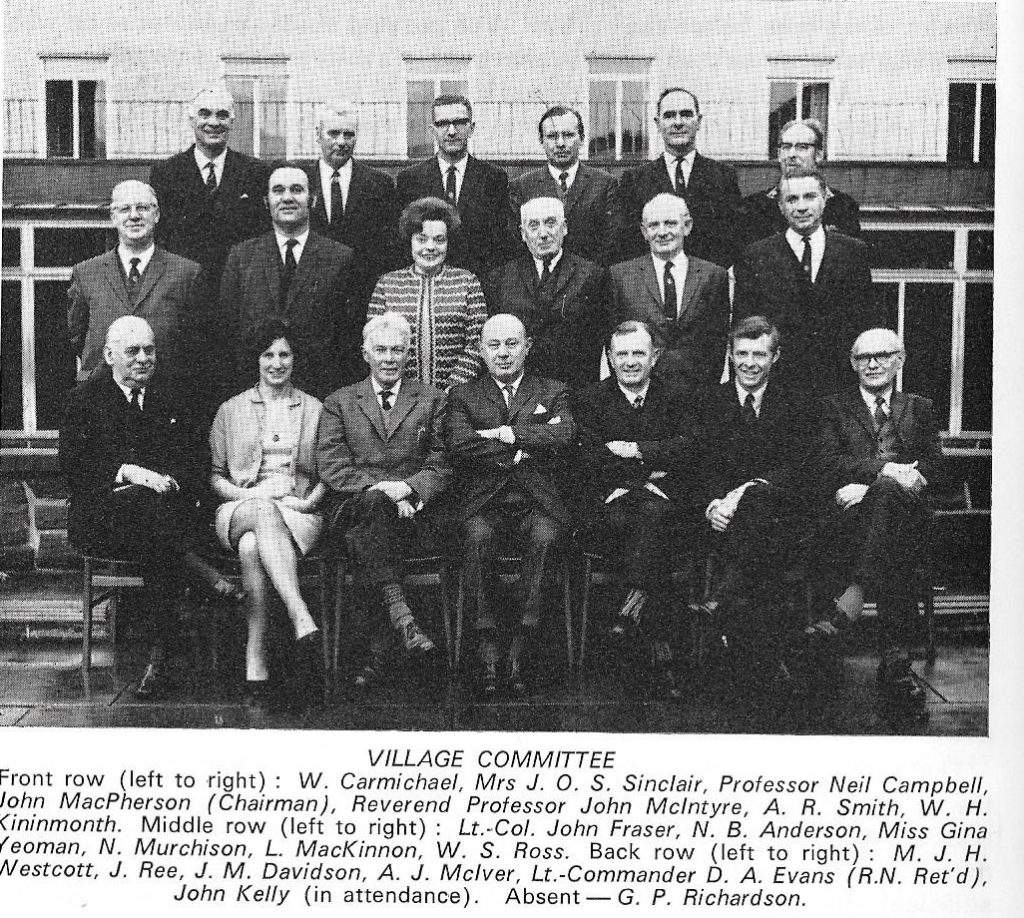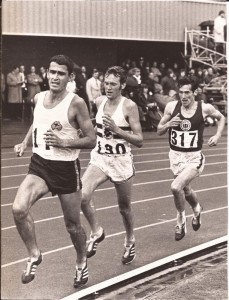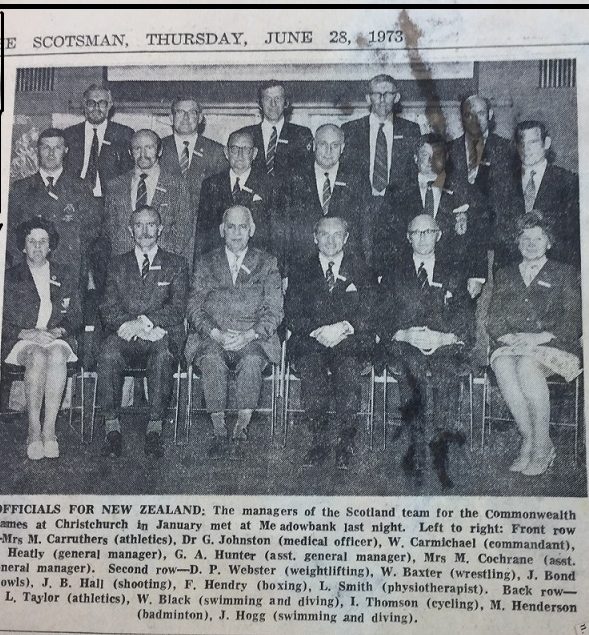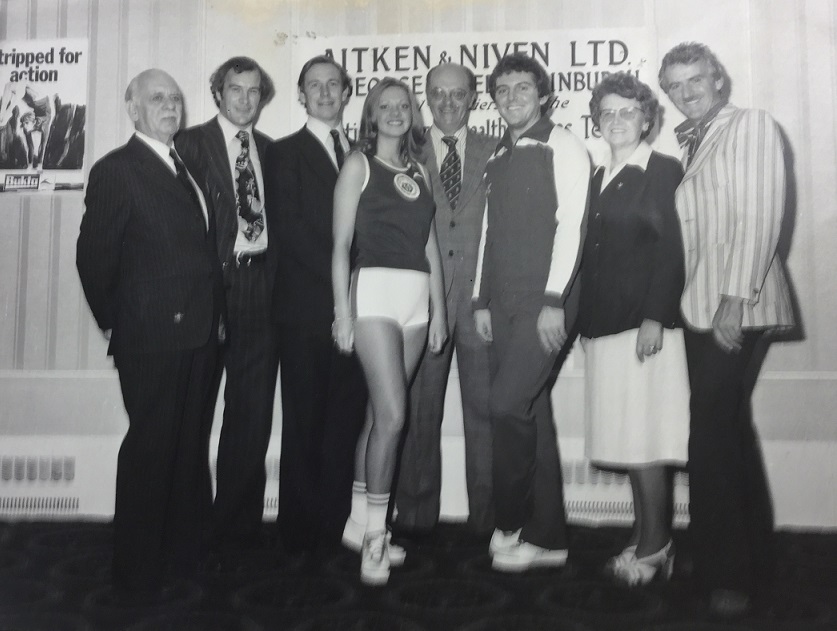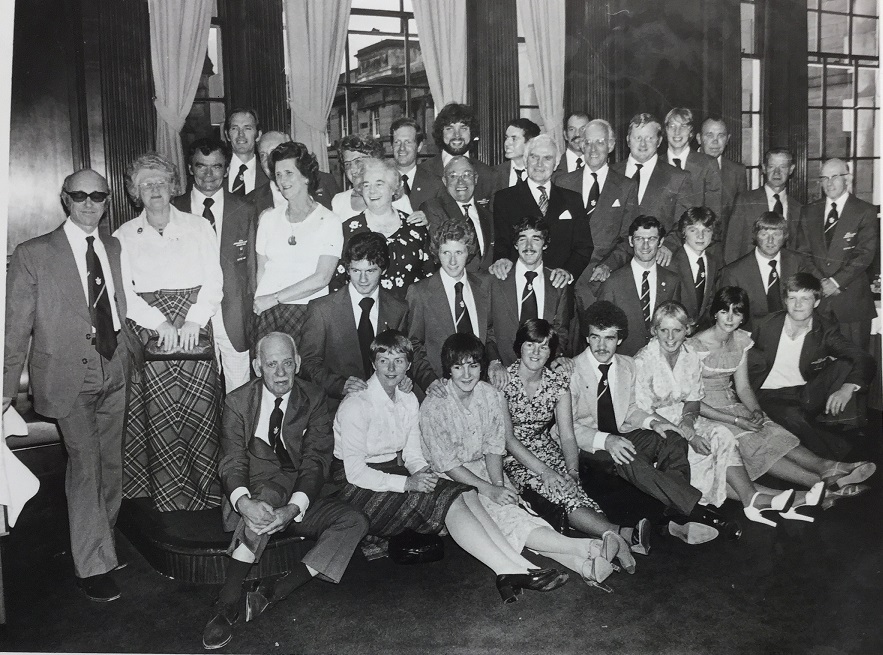Willie Carmichael
Willie Carmichael was very influential in Scottish athletics for several decades and yet his name is hardly known in current sporting circles. His career in the sport began in 1921 as a member of Edinburgh Northern Harriers before helping set up Canon Amateur Sporting Club in 1922. He was also a a champion wrestler who went on to manage the Scottish team at the 1934 Empire Games, and such was his involvement with that movement that he he was honoured with an OBE in 1971. He had energy in abundance, a vision equalled by few and was a great servant of Scottish athletics.
1922, Hawkhill. W Carmichael of Edinburgh Northern Harriers
In 1922 at the age of 17, Willie, who had started in athletics a year earlier in 1921 with Edinburgh Northern Harriers, was a founder member of Canon ASC . Although a runner, he was also already a committee man and, representing the club, he was the second man to hold the post of secretary of the East District Cross Country League (which was established in 1924) from 1926 . It was a post he held until 1928 when he went off to India to work. On his return two years later, he became League President from 1930 t0 1934, still as a member of Canon. 1934 was a significant year for Willie: when Canon ASC became Edinburgh Eastern Harriers he was a founder member; and in that same year he was manager of the Scottish wrestling team at the Empire Games in London. The Scottish Amateur Wrestling Association was formed in 1931. By 1938 Kenneth Whitton was President and Willie Carmichael Secretary of SAWA and they were joint team managers at the 1938 Empire Games in Sydney, Australia. (Kenneth Whitton was also an athlete and athletics historian who made several contributons to the official 50th anniversary history of the SAAA). Willie was very active in both sports simultaneously and by 1938, at the age of 36, already had experience of three Empire Games.
Final, Thomas Young Cup. W Carmichael v J Cropper (winner) 1932
As an elected member of the SAAA, he was automatically on the East District Committee of which he was Secretary from 1937 to 1951. President of the Scottish Cross-Country Union in 1937/38, he is better known for his work with the cross-country side of the sport before the War in 1939. The War started in 1939 and athletics was the least of anybody’s problems with the sport on a back burner until 1946.
Even the War couldn’t hinder his interest in the sport. Betwen 1944/45, while Director of Salvage for Northern Ireland, he was a member of the NIAAA committee and chaired the meeting of North and South which formed the Irish Amateur Athletic Board.
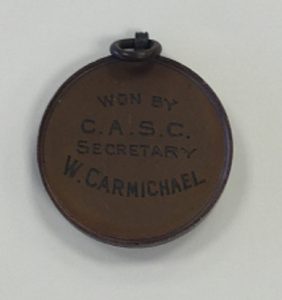 Medal for winning the Canon ASC v Kirkcaldy YMCA 2 Miles.
Medal for winning the Canon ASC v Kirkcaldy YMCA 2 Miles.
After the War Willie is better known for his work in track and field athletics. He remained on the East District and SAAA Committees and hard as he worked there, he still found time to serve the sport in a multitude of ways. For instance in August 1947 it was decided to publicise the ‘Enterprise Scotland Exhibition’ by organising an Edinburgh to London Relay. There were 26 runners involved and it was a mammoth undertaking – the logistics of providing transport, food, lodgings, etc were difficult enough but there were the added complications of ‘glad handing’ local dignitaries in every town and city they passed through and feeding information and publicity to the Press. The team manager was Willie Carmichael. He wrote about it in the ‘Scots Athlete’ magazine of October/November 1947 where, although he does not make it sound exceptional, it really was a first class piece of organisation and management.
Edinburgh Eastern Harriers, winners of Heriot Athletic Trophy
‘Braw Lads’ Challenge Shield for Mile Relay Race at Galashiels.Braw Lads Sportr
Willie Carmichael, President
That magazine made a point of covering the top athletics meetings of the day in detail – the Rangers Sports, the Glasgow Police and the Edinburgh Highland Games being the major ones. In the June 1947 issue, below the accompanying photograph, it noted:
“William Carmichael (Hon Sec, Eastern District, SAAA) is doing his utmost to make Edinburgh a great centre for amateur athletics. He is responsible for the big 14th June meeting at New Meadowbank, and Edinburgh Corporation Highland Games on Saturday 19th July at Murrayfield.”
Willie worked for the Lighting and Cleansing Department and had organised, among other things, the Edinburgh Lighting and Cleansing Department Open Meetings. When the Edinburgh Highland Games started out in 1947, who better to organise them than Willie Carmichael: I quote from the September, 1949, issue of the Scots Athlete:
A Bouquet for Edinburgh
W Carmichael who was the guiding light in this promotion once again proved his great flair for organising and it was grand to see such a resounding success. The hard-working Eastern District Secretary has the gift of imagination and believes in doing things on a big scale. For instance the appearance of Arthur Wint and Fanny Blankers-Koen would alone have drawn the crowd. But an invitation was also extended to a select British team of athletes and cyclists; and what a team Jack Crump had with him. ………….. But at the end of the day in attempting to recapture once more the highlights of the meeting, perhaps the most striking feature of all was the magnificent enthusiasm of the spectators. The warm sportsmanship of the Edinburgh audience remains a fragrant memory”.
Willie was not just an administrator either although he organised the Edinburgh Games for a total of 31 years. He was a Grade One Judge for all three disciplines of track, jumps and throws and officiated latterly as referee at meetings big and small. eg he officiated at the Rangers Sports from at least 1950 to 1962. In 1948 he worked at the London Olympics as a track judge and as a wrestling judge. He thus officiated as a Judge or official at Scottish open, District, National and International events on the track and over the country. He also officiated on the Edinburgh to Glasgow eight-man road relay. As a reward for his work with the SAAA he was elected President in 1953.
Mr Carmichael centre with Local Authority officials from the North of England
Not only was the man active on the Scottish stage, in 1952 he was a Scottish representative on the British Amateur Athletic Board – this was a three year appointment and it coincided ith his election as President of the SAAA.
So far Willie had had a good career in athletics, but the best was yet to come for Scottish athletics from Willie Carmichael. SAAA triple jump champion Graham MacDonald recalls that as a young competitor in the 1960’s, ” I remember Willie when he was competing in the East District Championships at what was then called New Meadowbank. That was the track constructed next to the Meadowbank Speedway Track used by Edinburgh Monarchs. All gone of course when the Commonwealth Games stadium was built for the 1970 Games. I didn’t know who he was but he looked very dapper and important in his Blue Blazer with a Commonwealth Games badge and wearing a soft hat. Later I realised who he was and at one meeting I overheard him saying to another official ‘we can do it you know’. I guess he was referring to the 1970 Games and I think that he was a driving force if not the main driving force behind Edinburgh’s bid.”
At that time Willie had been Chairman of the the Commonwealth Games Council for Scotland from 1950 to 1955 and followed that with Secretary of the Council. He would hold that post from 1956 to 1979. Willie was General Team Manager for the Vancouver Games in 1954 when Joe McGhee won the dramatic marathon and Bannister defeated Landy in the Mile. There is a little-known story of delay of the return home flight while repairs were carried out to an engine and Willie took the whole team to the pictures. ‘Three Coins in the Fountain’ was the film. would probably inspire many and probably sharpened Willie’s desire to have the Games in Scotland. The ‘hard-working East District secretary with a gift of imagination’ and who ‘believes in doing things on a large scale‘, as Emmet Farrell had it in 1947 was about to tackle his biggest task yet.
The Commonwealth Games in 1970 was an undertaking the likes of which had never been seen in Scotland before: there had been two Olympic Games held in London in times of genuine austerity when Britain took on the Games at short notice, and the Empire Games had been held in London in 1934 and Cardiff in 1958, but they had never been held in Scotland. Willie and Lord Provost Herbert Brechin fought hard to get the Games to Edinburgh. It was not just one bid that they tendered. I quote from the ‘Official History of the IXth British Commonwealth Games’:
“Scotland’s wish to be considered as a host country was presented to the British Commonwealth Games Federation in General Assembly at Melbourne in 1956, at Cardiff in 1958, at Rome in 1960, Perth, Australia, in 1962 (when Scotland was defeated in its quest by Jamaica by a vote of 17 to 16), at Tokyo in 1964, and eventually, successfully, by 18 votes to 11, over New Zealand at Jamaica in 1966, for the 1970 or IXth Games. There the case for Scotland was presented by the Rt Hon Sir Herbert Brechin, then Lord Provost of Edinburgh, and Mr W Carmichael Honorary Secretary of the British Commonwealth Games Council for Scotland, and supported by Councillor Magnus J Williamson (Edinburgh Corporation), and Messrs P Heatly, GA Hunter and DM Wright (Council for Scotland).”
Statisticians Colin Shields and Arnold Black say in their book
“This was not at all just some happy accident. Nothing was left to chance. The meticulous planning began even before Edinburgh beat Christchurch for the right to host the Games at a vote at the Tokyo Olympics in 1964, and the man responsible for so much of it was Edinburgh citizen Willie Carmichael. “More than any other single person, Carmichael brought the Games to Edinburgh,” Colin Shields and Arnold Black write in The Past Is A Foreign Country. “He was Scotland’s wrestling team manager at the inaugural Games at Hamilton in 1930 and had always had the guiding dream of bringing the Games to his native city. “Carmichael not only brought the Games to Edinburgh but organised them as well, acting as full-time director of operations. On a budget of £670,000, he produced the most thrilling and successful sporting extravaganza that Scotland had ever seen. His undoubted talent for organisation and stylish presentation resulted in the Games being judged an overwhelming success both in organisational and sporting terms. “It was by far the largest Games ever held, with 1,383 competitors and 361 officials from the record 42 countries taking part. Meadowbank Stadium, the host for the athletics events, had been constructed especially for the Games at a cost of £2.4 million, including a government grant of £750,000.”
Having learned something at all of these meetings and venues, the bid was sharper every time and by 1966 they must have had known exactly what was required. The voting had been 18 votes for Scotland against 11 for Christchurch, New Zealand. They now had the Games for Scotland. In December 1967 the Appeal Fund was set up with the aim of raising £200,00 towards the costs of organising the Games. Who better to oversee this mammoth task of previously unseen dimensions with the certainty of unexpected problems than Willie Carmichael. The first task was to set up the overall organising structure and it appeared like this:
Some links to extra material: Willie Carmichael’s Commonwealth Gallery : Some photographs from Willie’s career plus several Games pictures
Extract from the History of the Edinburgh Games, 1970: 1. Tasks facing the organisers once the Games were won and
2. Drawings from the various venues. As an indicator of the difference between these wonderful Games and thc current bloated affair
Finally, thanks to all those who helped with this task: Alex Jackson and Graham McDonald who helped get it started and Karl Magee and Ian Mackintosh in the Archive Department in the Stirling University Library. If you are at all interested in the Commonwealth Games of any era, they are a great source of information. Thanks, folks.
